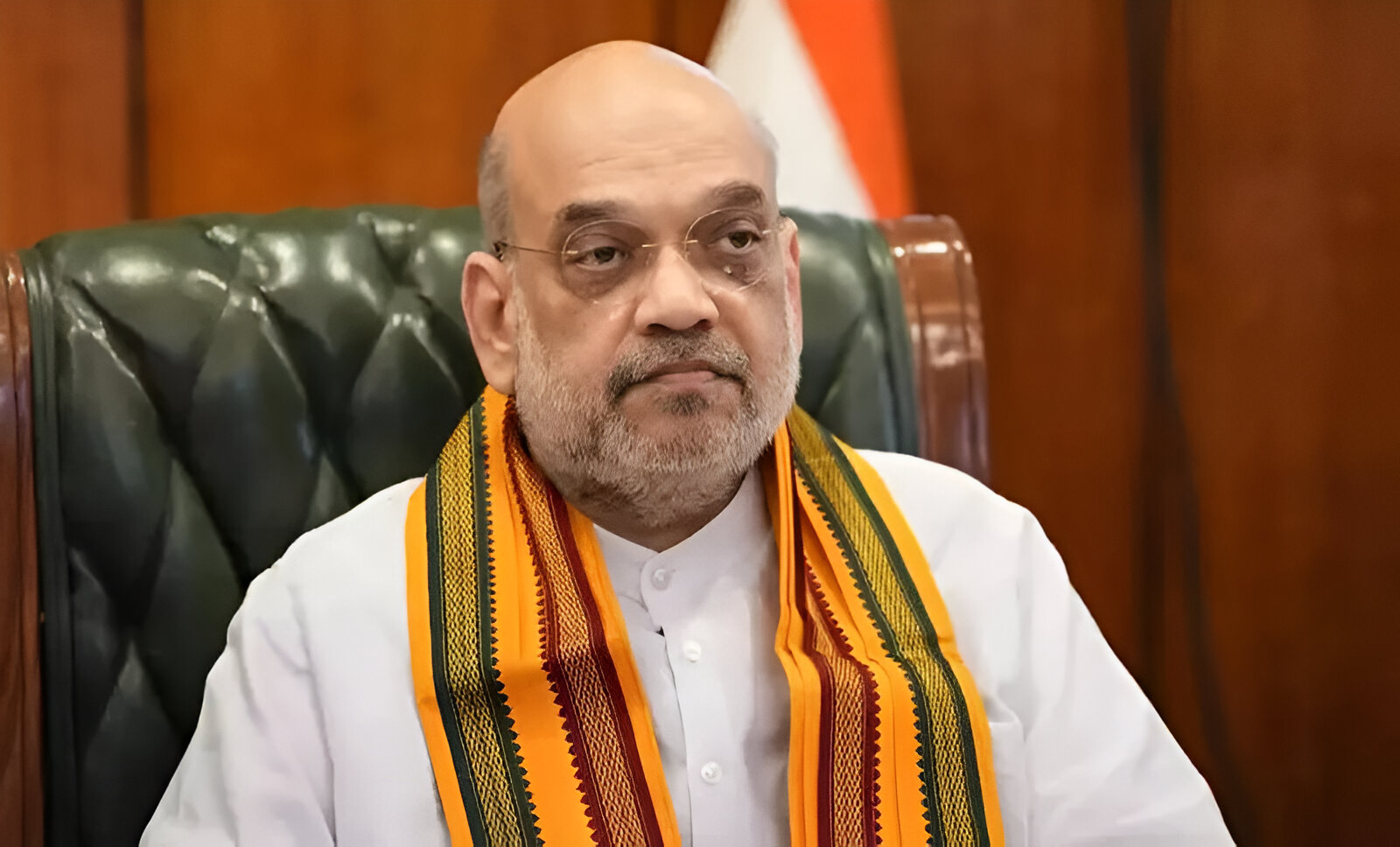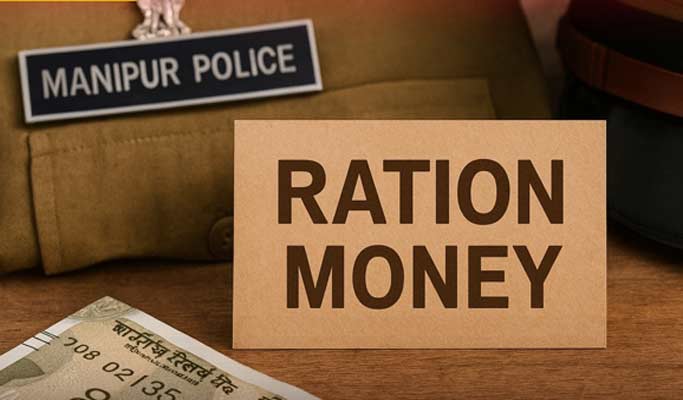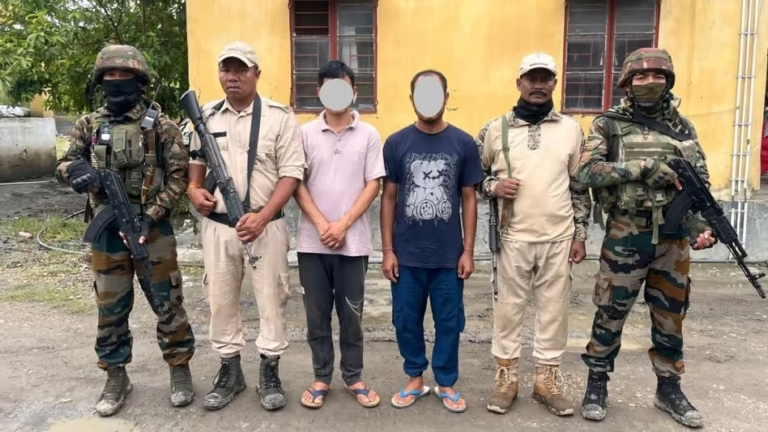Amit Shah Orders Free Movement on Manipur Roads from March 8: A Game-Changer for Connectivity and Development
Short Summary
In a decisive move aimed at boosting regional connectivity and economic growth, Union Home Minister Amit Shah has ordered the free movement of vehicles on Manipur roads starting from March 8. This landmark decision is expected to ease travel restrictions, enhance trade and tourism, and foster greater unity among communities by removing long-standing travel barriers. The move has sparked discussions on its potential to transform Manipur’s socio-economic landscape while ensuring improved safety and streamlined governance on the roads.
In-Depth Article: Exploring the Impact of Free Movement on Manipur Roads
Introduction: A New Dawn for Manipur’s Roadways
Have you ever felt the thrill of endless open roads, where barriers no longer hold you back from exploring new horizons? That’s exactly the spirit behind Union Home Minister Amit Shah’s recent order for free movement on Manipur roads, effective from March 8. Imagine a region where the usual checkpoints and travel restrictions give way to smooth, uninterrupted journeys—boosting business, tourism, and community interactions. In this article, we’re diving deep into what this monumental decision means for Manipur, its residents, and the broader landscape of Northeast India. So, buckle up as we explore how this order is set to transform the way people move, connect, and thrive.
Understanding the Context: Why Free Movement Matters
For years, Manipur’s roadways have been under various restrictions due to security concerns and administrative protocols. While these measures were intended to safeguard the region, they often created bottlenecks that hindered economic and social progress. Now, with the order for free movement, the state is poised for a new era of openness. But what exactly does “free movement” entail? Simply put, it means removing barriers that slow down the flow of vehicles and people, allowing for smoother travel across districts and between communities.
- Breaking Down Barriers: For many residents, travel restrictions felt like invisible walls that kept them from reaching markets, accessing healthcare, or visiting family. The new directive removes these obstacles, enabling people to move freely and efficiently.
- Economic Boost: When you think about it, less time on the road means more time for commerce. Businesses can transport goods faster, local markets become more accessible, and overall trade flourishes. This is not just a win for commuters; it’s a win for the entire economy.
- Cultural Integration: Manipur is a tapestry of diverse cultures and communities. Free movement on roads can help bridge the gaps between these groups, fostering a stronger sense of unity and shared identity.
This decision is like opening the floodgates after a long drought—suddenly, there’s an outpouring of opportunities and connections that can reshape the region’s future.
The Order in Detail: What Amit Shah’s Directive Means
Union Home Minister Amit Shah’s order for free movement on Manipur roads is more than a mere administrative update—it’s a comprehensive policy shift with wide-ranging implications. Let’s break down the key elements of the order:
- Effective Date: Starting from March 8, the restrictions that once limited vehicular movement on many Manipur roads will be lifted. This means that residents, traders, and tourists can expect smoother travel without the customary roadblocks.
- Scope and Coverage: The order applies to all major roads across the state, ensuring that key districts and transit routes are included. Whether you’re commuting within Imphal or traveling to remote districts, the directive promises to streamline the journey.
- Security and Safety Measures: While the order champions free movement, it also underscores the importance of maintaining security. Law enforcement agencies have been tasked with monitoring the roads closely, ensuring that the newfound freedom does not compromise safety. Advanced surveillance systems and rapid response units will work in tandem to keep an eye on potential threats.
- Economic Incentives: Recognizing the economic potential of unrestricted travel, the government is also rolling out complementary initiatives to support local businesses and traders. This includes financial incentives, improved road infrastructure, and promotional campaigns to boost tourism.
- Community Involvement: The order isn’t just top-down; it encourages community participation. Local leaders and civic bodies are being called upon to support the implementation process, ensuring that the transition is smooth and benefits everyone.
Imagine it as a well-choreographed dance where every step is planned to create a harmonious and seamless flow. That’s the vision behind this transformative move.
Historical Roadblocks: The Journey to Free Movement
To truly appreciate the significance of this order, it’s essential to understand the history of travel restrictions in Manipur. For decades, the state has grappled with issues stemming from internal security, insurgency, and political complexities. These challenges necessitated strict controls on vehicular movement, which, while effective in maintaining security, inadvertently stifled economic growth and community interactions.
- Past Restrictions: Historically, various checkpoints, permits, and roadblocks were common sights on Manipur’s roads. These measures were implemented to monitor movement and prevent the smuggling of arms or contraband. However, they also made everyday travel a cumbersome affair.
- Economic Impact: The bottlenecks created by these restrictions led to delays, increased transportation costs, and lost business opportunities. Traders and local entrepreneurs often struggled to maintain supply chains, which hampered the overall economic dynamism of the region.
- Social Consequences: The physical barriers also had a psychological impact. People began to feel isolated, with communities becoming segmented due to the constant interruptions in movement. This fragmentation impacted not only commerce but also the cultural and social cohesion of the state.
Now, with the lifting of these barriers, Manipur is stepping into a future where connectivity is prioritized, and the past constraints give way to progress.
Economic Implications: A Boost for Trade and Tourism
Let’s talk numbers and opportunities. When roads are free and unobstructed, the economic landscape undergoes a remarkable transformation. Here’s how free movement on Manipur roads can fuel economic growth:
- Streamlined Logistics: With the elimination of frequent checkpoints and delays, transportation of goods becomes faster and more efficient. This can reduce costs, increase profit margins for businesses, and ultimately benefit consumers.
- Enhanced Trade Opportunities: Local markets will see a surge in activity as goods, produce, and services can move more freely across districts. This is particularly significant for rural areas, where better connectivity can open up access to larger markets.
- Tourism Revival: Manipur is blessed with natural beauty and cultural heritage. Free movement means easier access for tourists, potentially boosting the hospitality sector. Imagine more visitors exploring scenic spots, ancient temples, and cultural festivals—this could be a game-changer for local economies.
- Investment in Infrastructure: The government is likely to couple this order with investments in road maintenance and modernization. Better roads not only support free movement but also attract investments from private sectors looking to tap into the region’s potential.
- Job Creation: As businesses expand and new opportunities arise from improved connectivity, job creation will follow. From logistics to tourism, various sectors stand to benefit, reducing unemployment and raising the standard of living.
Think of it like clearing the debris from a once-blocked river—suddenly, the water flows freely, nourishing everything in its path. That’s the potential impact on Manipur’s economy.
Political and Administrative Perspectives
A decision of this magnitude is not made in isolation; it reflects a broader political strategy and administrative foresight. Amit Shah’s directive is a culmination of years of dialogue, planning, and anticipation of future needs. Let’s delve into the political and administrative angles:
- Strategic Vision: The order is part of a broader vision to integrate Manipur more fully into the national economic and security framework. It signals the government’s commitment to regional development and modernization.
- Government Accountability: By prioritizing free movement, the government is addressing long-standing grievances related to travel restrictions. This move is likely to boost public confidence in the administration and showcase a commitment to responsive governance.
- Regional Stability: Political leaders emphasize that improved connectivity will also enhance security by fostering better coordination among law enforcement agencies. When people can move freely, it’s easier for authorities to monitor and respond to any potential threats.
- Inter-Governmental Coordination: The order required seamless coordination between various levels of government—from local district administrations to national security agencies. This collaborative approach is a model for future initiatives aiming to balance freedom of movement with necessary safety protocols.
- Public Sentiment: Politically, the move is expected to be popular among the masses, as it addresses a long-standing source of frustration and isolation. It also reinforces the image of a government that listens to and acts on the concerns of its people.
Imagine a well-oiled machine where every part, from the highest echelons of government to the local community leaders, works in perfect harmony. That’s the kind of integrated approach we’re witnessing with this order.
Social and Cultural Impacts: Reconnecting Communities
Beyond economics and politics, free movement on roads has profound social and cultural implications. For a state like Manipur, where cultural diversity is a rich tapestry of traditions, language, and heritage, improved connectivity can foster greater unity. Let’s explore these impacts:
- Bridging Communities: Free movement makes it easier for people from different parts of Manipur to interact, share ideas, and celebrate common cultural events. It can help bridge the gaps between urban and rural areas, fostering a sense of belonging and shared identity.
- Reviving Cultural Traditions: Festivals, fairs, and cultural events that were once limited by travel restrictions can now flourish. With easier access, people can participate in age-old traditions, ensuring that cultural heritage is passed on to future generations.
- Educational Opportunities: Improved road connectivity means better access to educational institutions. Students from remote areas can now reach schools and colleges more easily, opening up new horizons for learning and growth.
- Healthcare Accessibility: When people can move freely, reaching healthcare facilities in emergencies becomes less daunting. This can lead to better health outcomes and an overall improvement in quality of life.
- Enhanced Social Life: Simple things like visiting friends and family, exploring local markets, or enjoying a day out become easier. This can strengthen social bonds and contribute to a more vibrant community life.
Imagine a patchwork quilt where each piece represents a community. Free movement allows these pieces to come together seamlessly, creating a beautiful and unified whole.
Infrastructure and Technological Integration
One of the key components ensuring the success of this initiative is the simultaneous improvement of infrastructure and the integration of modern technology. Let’s take a closer look at how these elements come into play:
- Road Upgrades: With increased movement, there’s a renewed focus on maintaining and upgrading road networks. Better roads not only support free movement but also reduce vehicle wear and tear, making travel safer and more efficient.
- Smart Transportation Systems: The government is likely to invest in smart traffic management systems that use real-time data to monitor traffic flow and prevent congestion. These systems can help optimize travel routes and enhance overall efficiency.
- Surveillance and Security: As vehicles move freely, advanced surveillance measures will ensure that security is not compromised. From CCTV cameras to drone monitoring, technology will play a crucial role in maintaining law and order.
- Public Transport Initiatives: With a freer flow of traffic, public transportation systems can be expanded and improved, offering reliable alternatives to private vehicles and reducing overall traffic congestion.
- Digital Platforms: Mobile apps and digital platforms will allow citizens to access real-time updates on road conditions, travel advisories, and security alerts. This empowers travelers with information and fosters a culture of informed movement.
Imagine technology as the conductor of an orchestra, ensuring that every instrument—be it road infrastructure, surveillance, or public transport—plays in perfect harmony to create a symphony of smooth, efficient travel.
Environmental Considerations
An often-overlooked aspect of enhanced connectivity is its environmental impact. While increased vehicular movement can raise concerns about pollution, there are significant measures being implemented to ensure that environmental sustainability is not compromised:
- Eco-Friendly Initiatives: The government is encouraging the adoption of eco-friendly vehicles and alternative fuels as part of its broader strategy. Incentives for electric vehicles and stricter emission standards are being discussed.
- Green Infrastructure: Alongside road upgrades, there are plans to develop green corridors and improve roadside vegetation. These efforts help mitigate the environmental impact and contribute to a healthier ecosystem.
- Sustainable Urban Planning: As free movement boosts urban growth, planners are increasingly focusing on sustainable designs that balance development with environmental conservation.
Imagine a future where development and nature walk hand in hand—where the roads that connect communities also serve as green pathways that nurture the environment.
Challenges and Future Prospects
Every significant change comes with its set of challenges. While the order for free movement on Manipur roads is a promising step forward, certain hurdles need to be addressed to ensure long-term success:
- Balancing Freedom with Security: With the lifting of restrictions, maintaining robust security measures remains a top priority. Continuous monitoring and adaptive strategies will be essential to address any emerging threats.
- Infrastructure Readiness: As more vehicles hit the roads, the existing infrastructure must keep pace. Continuous investments in road maintenance and expansion will be necessary.
- Managing Increased Traffic: Free movement could lead to a surge in vehicular traffic. Effective traffic management systems and public transportation improvements are crucial to prevent congestion.
- Environmental Impact: While initiatives for eco-friendly travel are underway, constant vigilance is needed to ensure that increased movement does not adversely affect the environment.
- Public Awareness and Compliance: For the success of this initiative, it’s important that citizens are well-informed and adhere to new guidelines. Regular communication, feedback loops, and community engagement will help sustain the momentum.
These challenges are not roadblocks but opportunities to fine-tune policies and create a resilient, forward-thinking transportation network.
Looking to the Future: What Lies Ahead?
The order for free movement on Manipur roads is more than a temporary measure—it’s a stepping stone toward a future of greater connectivity, economic growth, and social unity. Here’s a glimpse of what the future might hold:
- Wider Regional Integration: As Manipur’s roads become more accessible, the state can further integrate with neighboring regions, enhancing trade and cultural exchange.
- Economic Transformation: Improved connectivity will likely spur economic development across various sectors, from agriculture and manufacturing to tourism and technology.
- Enhanced Quality of Life: With better roads, public services such as healthcare, education, and emergency response will see significant improvements, leading to an overall enhanced quality of life for residents.
- Model for Other Regions: Manipur’s initiative could serve as a model for other states facing similar challenges. A successful free movement policy here might inspire similar reforms across Northeast India and beyond.
- Sustainable Development: With the right policies in place, free movement can be part of a broader strategy that balances development with environmental sustainability and cultural preservation.
Imagine a future where the roads are not just pathways for travel but arteries that pump life, opportunity, and hope into every corner of the region.
Conclusion: A New Era of Freedom and Progress
In wrapping up, the order issued by Amit Shah for free movement on Manipur roads from March 8 is a transformative development that touches every aspect of life in the region. It is a call to unlock potential, bridge divides, and propel Manipur into a future defined by openness, prosperity, and unity. From improved economic opportunities to enhanced cultural connectivity and robust security measures, this initiative marks the beginning of a new era where barriers—both physical and metaphorical—are dismantled. As citizens and authorities work together, the promise of free movement becomes a symbol of progress, resilience, and the unwavering spirit of a community determined to chart a better tomorrow.
FAQs
- What does the order for free movement on Manipur roads mean for the local population?
It means that from March 8, residents will experience fewer travel restrictions, leading to smoother commutes, enhanced trade, and better access to essential services, ultimately boosting both economic and social development. - How is the government ensuring security while implementing free movement?
The government has deployed advanced surveillance technologies, increased police patrols, and maintained coordinated operations to monitor high-risk areas, ensuring that free movement does not compromise public safety. - What economic benefits are expected from this policy change?
The removal of roadblocks is anticipated to lower transportation costs, speed up logistics, encourage tourism, and attract investments, thereby creating new business opportunities and stimulating regional economic growth. - How will improved road connectivity impact social and cultural life in Manipur?
Better connectivity will enable easier access to cultural sites, promote inter-community interactions, support educational opportunities, and strengthen the overall social fabric by bringing people together across diverse regions. - What challenges might arise from the implementation of free movement, and how can they be addressed?
Challenges include managing increased traffic, maintaining security, and ensuring environmental sustainability. These can be addressed through modern traffic management systems, continuous infrastructure investment, robust law enforcement, and eco-friendly initiatives.



